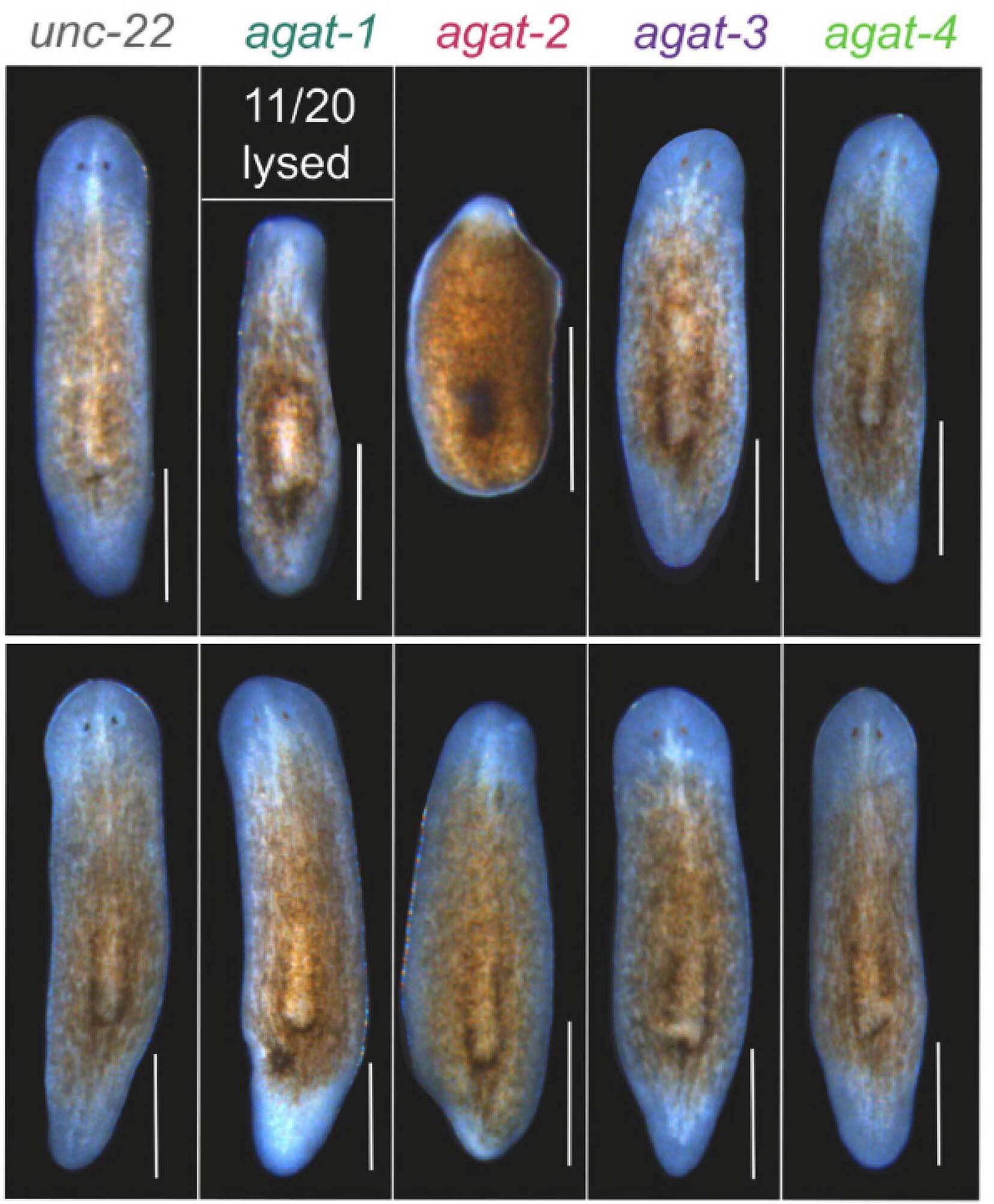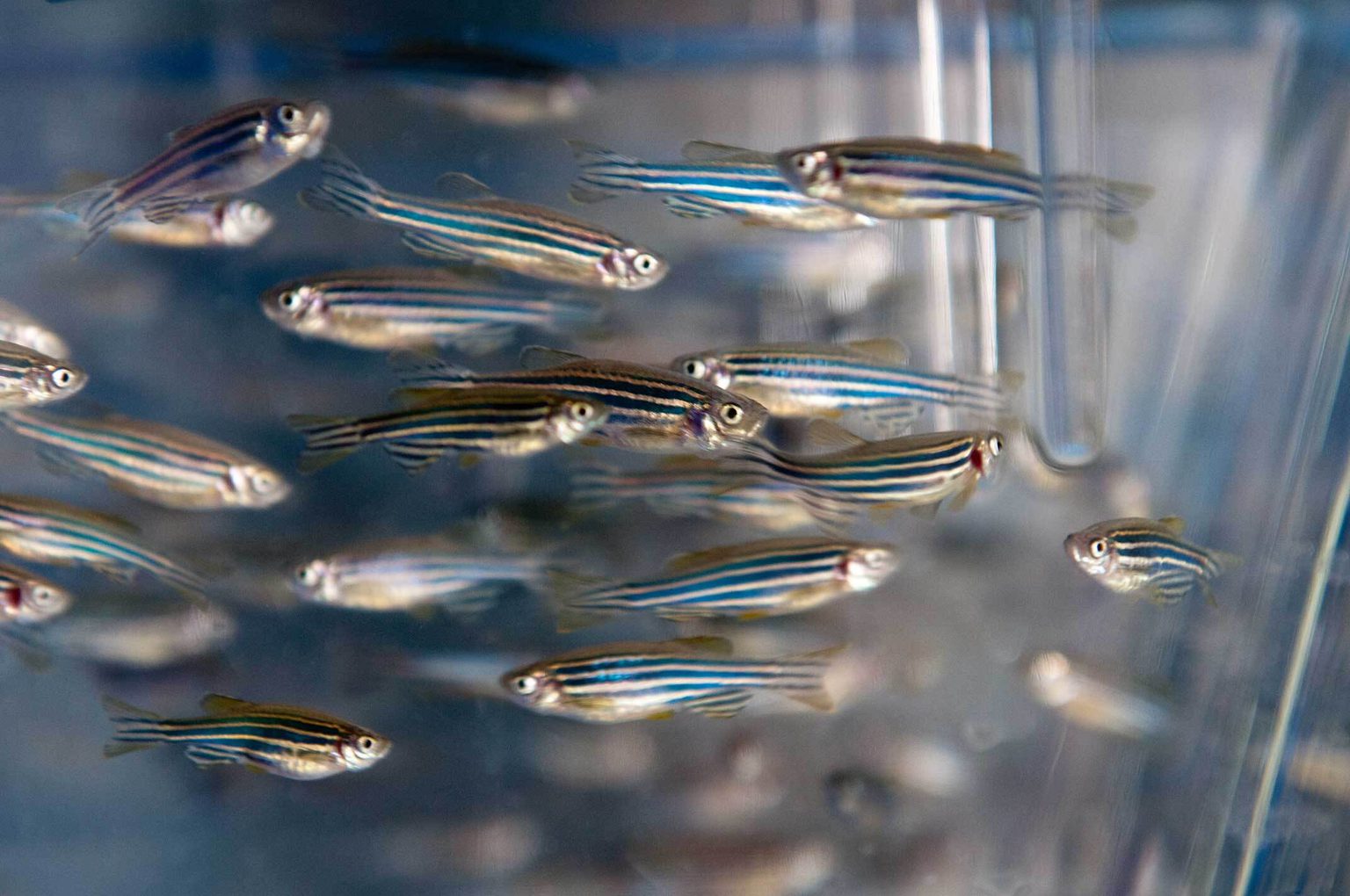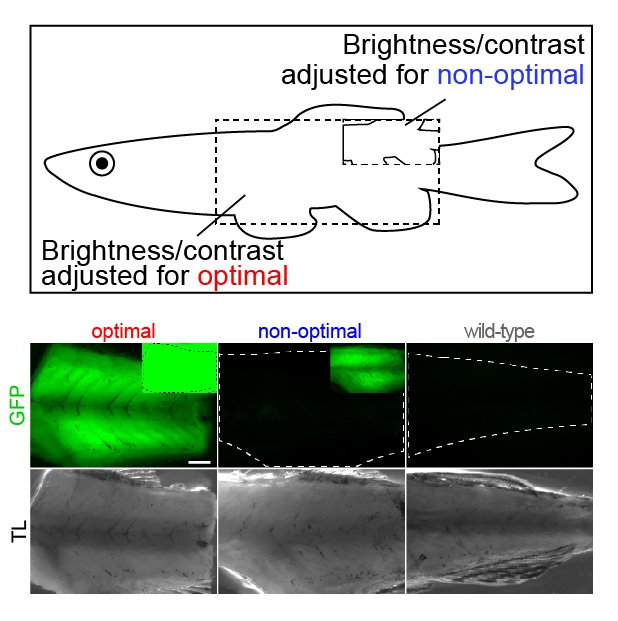Codons that increase RNA stability are deemed “optimal” while those that increase RNA degradation are “non-optimal,” which can have dramatic impacts on resulting protein concentrations. Previous studies have primarily focused on codon optimality just after fertilization, the highly dynamic developmental stage where the newly formed embryo must stop relying on RNA and proteins supplied by its parents and must begin manufacturing its own.
Now, the research team led by Michelle DeVore, Ph.D., has examined the regulatory effect of codon composition in 8-day-old zebrafish, a more stable phase of development. The team designed “reporters,” or genes with a fluorescent tag and nearly identical DNA sequences, shifted by a single DNA “letter.” This shift changes the three-letter codons, resulting in reporters enriched in either optimal or non-optimal codons.
Using a molecular technique called real-time qPCR and an imaging technique called fluorescent microscopy, the team quantified RNA levels and visualized protein levels in zebrafish strains with optimal and non-optimal reporter genes. Zebrafish with optimal reporter genes had significant increases in RNA levels and even larger changes in protein concentrations. This suggests that codon optimality greatly influences both gene activity and subsequent protein production at far later developmental time points, expanding on the importance of this regulatory pathway.
“The results were striking. Codon optimality helps explain a hidden layer of genetic control,” said Bazzini. “This could be used to design better therapies, especially for diseases where protein production needs to be finely tuned.”
Going forward, the framework established in this research can be extended to target the effects of specific codons as well as to examine how codon optimality governs gene activity across an organism’s lifespan. Understanding more about how codon choice affects gene activity could help scientists devise synthetic genes as treatments for diseases that need fast protein production, like cancer.
This work was funded by the National Institute of General Medical Sciences of the National Institutes of Health (NIH) (award: R01GM136849), the NIH Office of the Director (award: R21OD034161), and institutional support from the Stowers Institute for Medical Research. The content is solely the responsibility of the authors and does not necessarily represent the official views of the NIH.





